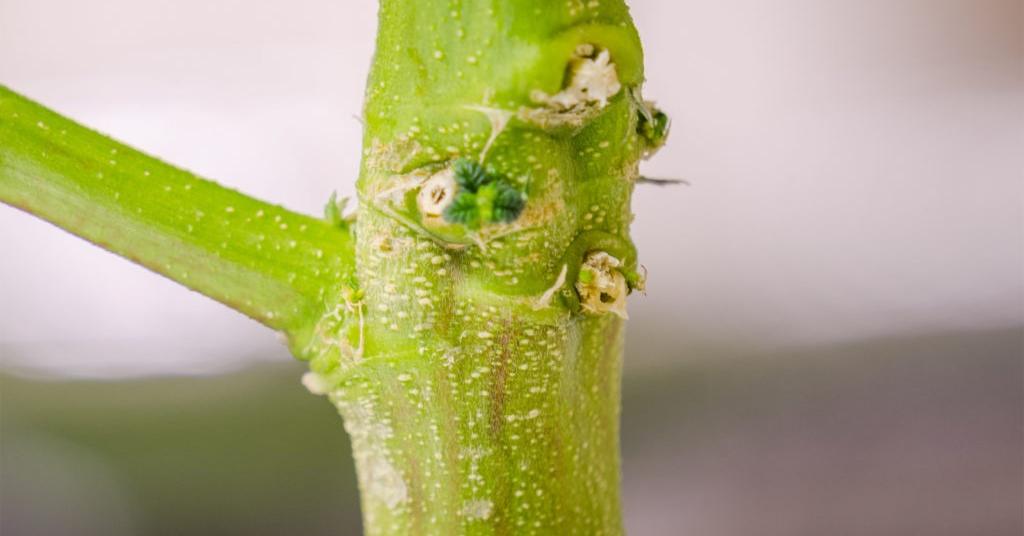Are you curious to know what is node and internode? You have come to the right place as I am going to tell you everything about node and internode in a very simple explanation. Without further discussion let’s begin to know what is node and internode?
In the fascinating world of botany, the terms “node” and “internode” refer to fundamental structural components in the growth of plants. Understanding these concepts is essential for anyone interested in plant biology, gardening, or agriculture. In this blog, we will explore what nodes and internodes are, their roles in plant development, and how these components are integral to the form and function of plants.
What Is Node And Internode?
A node, in botanical terms, is a crucial point on a plant’s stem or shoot where leaves, branches, and flowers originate. It serves as a hub for various growth activities, including the development of leaves and auxiliary buds. Nodes can be easily identified as the slightly swollen or protruding areas on the stem or branch where growth occurs.
Key Characteristics Of Nodes:
- Leaf Attachment: Nodes are the points where leaves attach to the stem. The arrangement of leaves on a stem is determined by the spacing and positioning of nodes.
- Auxiliary Buds: Nodes house auxiliary buds, which have the potential to develop into branches, flowers, or new shoots. These buds remain dormant until they receive appropriate signals to grow.
- Vascular Connections: Nodes are critical for the transportation of water, nutrients, and photosynthetic products throughout the plant. They contain vascular tissues that facilitate these processes.
- Growth Initiators: Nodes are growth initiators, playing a pivotal role in the formation and direction of new plant parts.
Internode: The Space Between
The internode is the portion of a plant stem or shoot that lies between two adjacent nodes. It represents the elongated, often cylindrical, segment of the stem that facilitates the overall height and structure of the plant. The length and characteristics of internodes can vary significantly among different plant species and even within the same plant.
Key Characteristics Of Internodes:
- Elon-gation: Internodes undergo elongation to increase the distance between nodes, allowing plants to reach higher and capture more sunlight for photosynthesis.
- Strength and Support: Internodes provide structural support to the plant, helping it resist gravity and maintain an upright position. The length and strength of internodes can affect the overall posture of the plant.
- Transport of Water and Nutrients: While nodes house the vascular connections, internodes facilitate the efficient transport of water, nutrients, and photosynthetic products between nodes.
- Adaptations: The length and number of internodes can be influenced by environmental factors, such as light, temperature, and soil conditions. Some plants may have long internodes to compete for sunlight in crowded environments, while others may have short internodes to conserve water in arid regions.
Importance Of Nodes And Internodes
- Branching and Growth: Nodes serve as the basis for branching and the development of new plant parts, while internodes regulate the height and spacing of these parts.
- Photosynthesis: Leaves attached at nodes are the primary sites for photosynthesis, the process by which plants convert sunlight into energy and organic compounds.
- Vascular Transport: Nodes and internodes play a critical role in the transport of water, nutrients, and sugars throughout the plant, ensuring its survival and growth.
- Adaptation: The variation in node and internode characteristics among different plant species allows for adaptation to diverse ecological niches.
Conclusion
Nodes and internodes are integral to the growth, structure, and function of plants. These structural components, often overlooked but essential, determine how a plant branches, how it captures sunlight for photosynthesis, and how it thrives in diverse environments. Understanding the roles and characteristics of nodes and internodes is fundamental for anyone interested in the biology, cultivation, or appreciation of the botanical world.
FAQ
What Is Node For Class 6?
Node A particular part of a plant where a leaf is attached to the stem is called the Node.
What Is A Node On A Plant?
Nodes. A node is an area on a stem where buds are located (figure 6). It is a site of great cellular activity and growth. It is here that small buds develop into leaves, stems or flowers.
What Is An Internode Short Answer?
1. the part of a plant stem between two nodes. 2. the part of a nerve fibre between two nodes of Ranvier.
What Is The Difference Between Nodes And Internodes For Class 6?
The place of attachment of the leaf is referred to as a node. The area between the two nodes is known as the internode. Scars, buds, leaves, or branches can be used to identify this place. The lack of any vestiges, such as buds, leaves, or branches, and any scars.
I Have Covered All The Following Queries And Topics In The Above Article
What Is Node And Internode In Stem
What Is Node And Internode Example
What Is Node And Internode Class 12
What Is Difference Between Node And Internode
Difference Between Node And Internode Class 6
Function Of Internode In Plants
What Is Internode In Plants
What Is Node And Internode
What is node for Class 6
